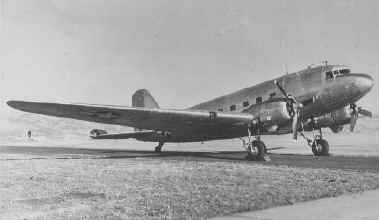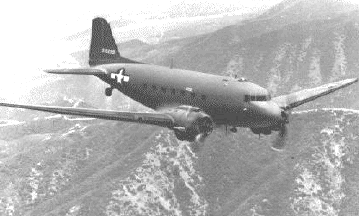 |
|
|||
|
|
||||
|
DOUGLAS DC3 "DAKOTA" 'The Biscuit Bombers' 'The Gooney Bird' |
 |
|
History owes a lot to Trans World Airways (TWA) for the production airliner delivered by Douglas was the DC-2, which began operations in July 1934. At that time it was the best passenger aircraft in the world, and other operators soon began queuing up to place orders. First of the non-US airline customers was KLM, which began flying the type in the autumn of the same year, and the DC-2 seemed set for a long production run. However, even greater acclaim was to
come Douglas's way when it attempted to fulfil yet another requirement,
this time from American Airlines. This company operated sleeper aircraft
on its trans-America flights and, wanting to keep abreast of the latest
developments, asked Douglas for a suitable airliner. Their answer was
the DC-3, a direct but slightly larger development of the DC-2. The
prototype first flew on 17 December 1935, and the design was soon being
produced in two versions for American Airlines the 14-passenger DST
sleeper and a 21-seat 'daytime' airliner. Services with DC-3s started in
June of the following year.
|
| Douglas DC-3 | |
|---|---|
| Wing span: | 95 ft 0 in (28.96 m) |
| Length: | 64 ft 5 in (19.63 m) |
| Height: | 16 ft 4 in (4.97 m) |
|
Max T/O Gross: |
28,000 lbs (12,701 kg) |
|
Cruise Speed: |
170 mph (274 km/h) |
|
Range: |
1,025 miles (1,650 km) |
| Powerplant: | |
| Two Wright Cyclone
R-1820, 9 cylinder, radial air-cooled engines,
each providing 1,475 hp (1,099 kw) at takeoff. |
|

